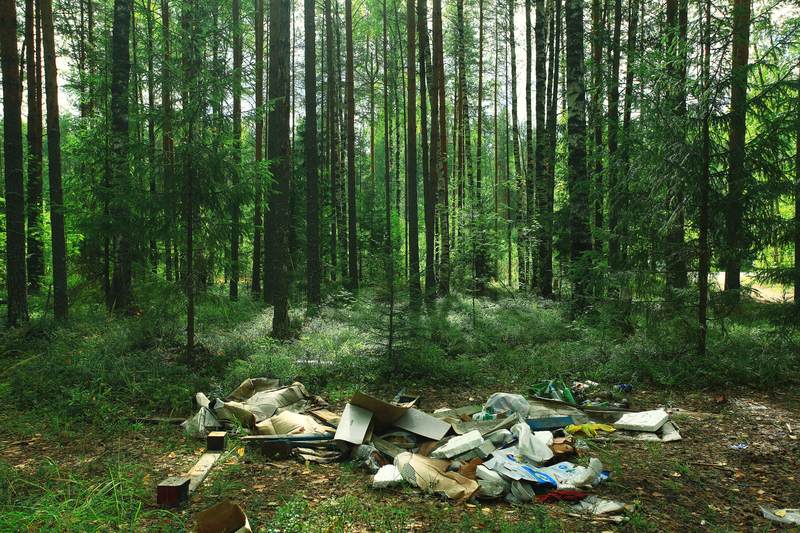How Human Societies Have Addressed Waste Challenges Through Time
Waste management has been an ever-present challenge in human civilization. From the humble beginnings of hunter-gatherer societies to the towering skyscrapers of modern metropolises, the way humans have addressed waste challenges has evolved significantly. Today, as we face immense environmental crises fueled by improper waste disposal and overconsumption, it's essential to look back and learn how earlier societies tackled these enduring issues.
The Origins of Waste: Early Human Societies
The story of waste management begins in prehistoric times. Early humans, living in small nomadic groups, generated minimal waste. Their lifestyles were inherently sustainable, using biodegradable materials for tools and shelters, and what little non-degradable waste they produced was easily absorbed by the environment.
Primitive Waste Disposal Methods
- Scattering: Waste was simply left where it fell, breaking down naturally over time.
- Burning: Non-biodegradable items such as bones and tough plant matter were sometimes burned.
- Burial: Some societies began digging pits to bury organic waste, preventing the spread of disease.
As populations began to settle and grow, these rudimentary methods were no longer sufficient. The rise of agriculture and permanent settlements marked the dawn of new waste challenges.

Waste Management in Ancient Civilizations
The Indus Valley: Innovators of Urban Sanitation
The Indus Valley Civilization (circa 2600-1900 BC) is renowned for its advanced approach to urban sanitation. Cities like Mohenjo-Daro featured:
- Covered drains along major streets
- Individual household toilets connected to drainage systems
- Brick-lined sewers to remove waste from residential areas
This early engineering marvel dramatically reduced disease spread and set a precedent for future urban planning.
Ancient Rome: The Marvel of Cloaca Maxima
Rome's rise as a superpower enabled massive population growth, bringing with it serious waste disposal issues. The Romans constructed the Cloaca Maxima, one of the world's earliest and largest subterranean sewage systems. Some key features:
- Rainwater drainage combined with sewage disposal
- Public latrines equipped with running water
- Man-made channels to divert waste away from populated areas
Waste challenges in Ancient Rome also included:
- Regular collection of household refuse by private contractors
- Strict regulations about littering
Despite these innovations, not all citizens benefitted equally--wealthier districts were better serviced, while poorer areas still struggled with overflow and pollution.
Medieval and Renaissance Europe: Sanitation Struggles
The decline of the Roman Empire led many European cities to neglect sophisticated sewer systems, resulting in unsanitary and hazardous living conditions.
Urban Filth and Public Health
- Waste and excrement were often dumped into city streets and rivers
- The infamous "garderobes" or latrines of castles and homes emptied directly into moats or the open ground
- Periodic plague outbreaks were exacerbated by filthy conditions
Public outcry led to some attempts at legislation:
- Edicts prohibiting the dumping of waste in certain public areas
- Formation of "rakers", early waste collectors who removed refuse from the streets
The Industrial Revolution: When Waste Became a Crisis
The 18th and 19th centuries saw bustling new industrial towns emerge, alongside an unprecedented explosion in waste generation. Factories released chemicals and toxic by-products, while population surges overwhelmed primitive sanitation systems.
Waste Disposal Methods in the Industrial Age
- Open dumps and landfills became the primary method for municipal solid waste
- Introduction of incineration for reducing waste volumes
- Early recycling efforts--for example, the collection and re-use of rags, bones, and metals
Public health officials finally began to recognize the link between refuse, pollution, and the spread of diseases like cholera. This resulted in:
- Establishment of public health boards
- Legal requirements for proper waste collection and removal in urban areas
Modern Waste Management: Innovation and New Challenges
The 20th Century: Technological Advances and Increasing Complexity
Rapid industrialization and consumer culture in the 20th century generated entirely new forms of waste, such as plastic, electronic devices, and synthetic chemicals. Governments worldwide established public waste collection services and implemented new technologies:
- Landfill liners and leachate management to reduce groundwater contamination
- Mechanical and biological treatment plants
- Advanced incinerators with emission controls
The concept of the "waste hierarchy"--Reduce, Reuse, Recycle--emerged in response to mounting landfills and environmental disasters. Municipal recycling programs grew across Europe, North America, and eventually the rest of the world.
Electronic and Hazardous Waste
Modern societies also began grappling with the safe disposal of hazardous waste:
- Specialized facilities for toxic chemicals and radioactive materials
- International treaties to limit waste trade (e.g., the Basel Convention)
- Development of "take-back" programs for electronics and batteries
Case Study: The World's Most Successful Recycling Program
Sweden stands as a modern model for sustainable waste management. By investing in advanced recycling facilities and fostering a culture of environmental responsibility, Sweden has achieved:
- Recycling or composting over 99% of household waste
- Waste-to-energy plants powering homes
- Strong laws incentivizing manufacturers to reduce packaging and reclaim products
The Environmental Costs of Poor Waste Management
Poorly managed waste can have far-reaching consequences:
- Groundwater contamination from unlined landfills
- Plastic pollution in oceans threatening marine life
- Air pollution from burning waste, contributing to climate change
- Public health crises from untreated garbage
These challenges have spurred a new generation of waste solutions, including zero-waste movements, circular economy strategies, and extended producer responsibility laws.
Addressing Waste Challenges: Towards a Circular Economy
The Zero Waste Movement
- Advocates for eliminating waste through better design and lifestyle choices
- Promotion of bulk shopping, composting, and reuse
- Community-led initiatives and policy advocacy
The Circular Economy
- Designing products for longevity, reparability, and recycling
- Keeping materials in use and regenerating natural systems
- Reducing reliance on resource extraction
Businesses and governments align with these principles by:
- Offering repair services and modular designs
- Implementing take-back schemes and deposit systems
- Encouraging "product as a service" models
Future Trends in Waste Management
Smart Technologies and Data-Driven Waste Solutions
- IoT-enabled waste bins alerting municipalities to full containers
- Artificial intelligence sorting recyclables in material recovery facilities
- Blockchain tracking of hazardous waste across supply chains
Biological and Chemical Innovations
- Bioplastics and compostable materials to phase out single-use plastics
- Microbial and enzymatic treatments of organic and plastic waste
- Circular chemistry for reclaiming valuable raw materials from waste

What Can Individuals Do?
Everyone plays a crucial role in waste management solutions:
- Practice the "three Rs": Reduce, Reuse, Recycle
- Compost food and garden waste
- Support legislation and businesses committed to sustainable practices
- Educate others about responsible waste disposal
Conclusion: The Evolution of Waste Management and Societal Responsibility
Addressing waste challenges has always been a communal responsibility. From simply burying organic matter in ancient times to developing high-tech recycling systems, societies have adapted their waste solutions to meet changing circumstances. As the world faces ever-more complex and hazardous forms of waste, the lessons of history offer vital guidance. By combining ancient wisdom with modern innovation, human societies can forge a future where waste is not a problem to be managed, but a resource to be harnessed for the benefit of people and planet alike.
How human societies address waste will continue to define the health, prosperity, and sustainability of civilization for generations to come. The journey is far from over, but with awareness, commitment, and ingenuity, a cleaner world is within reach.